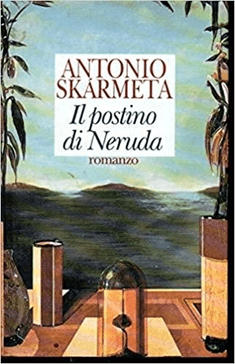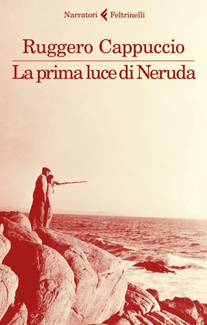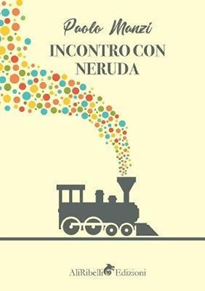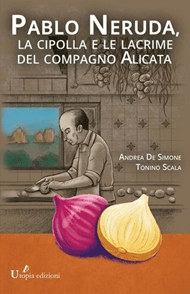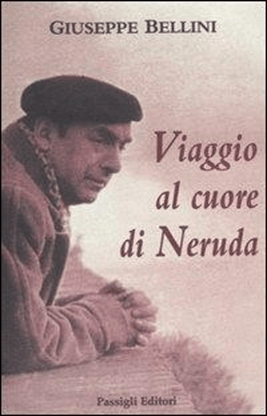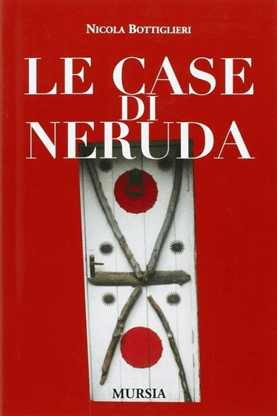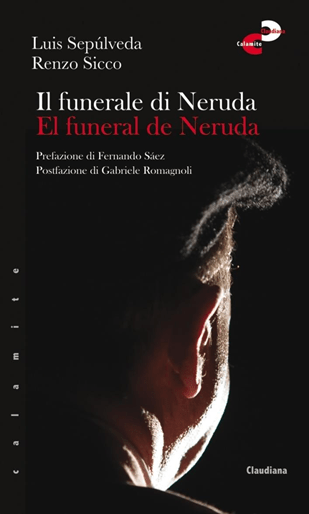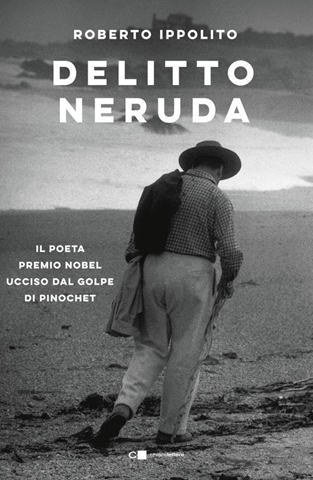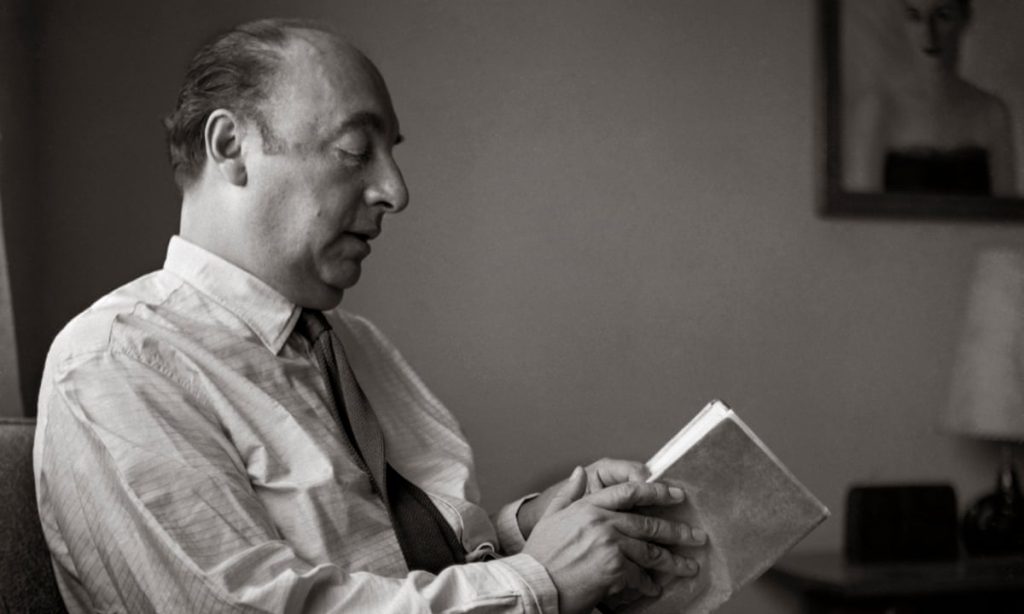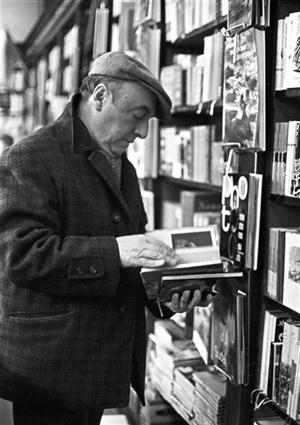
Librarian, Master in Literature. Researcher of the project in Italy.
Neruda Illustrated
Pablo Neruda: 20 Love Poems and a Desperate Song.
Attilio Rossi was born in 1909 in Albairate and died in Milan in 1994. He made a pictorial journey throughout the 20th century, ranging from abstract art to hyper-realism, breaching the frontier of the most advanced figurative art, whilst taking into account the most important experiments in contemporary art.
He had a deep relationship with Hispanic and Latin American culture during his long stay in Argentina (1935-1950), where he was the first artistic director of Editorial Espasa Calpe and then, in 1938, founder of the Losada Press with Guillermo De Torre, Francisco Romero and Gonzalo Losada. He created the logo for the new press. He also illustrated numerous books and covers for the volumes in which he edited the publication.
During this intense editorial work, Attilio Rossi established relationships of collaboration and friendship with numerous Spanish intellectuals. Among his friends was Pablo Neruda, for whom he illustrated Twenty Love Poems and a Desperate Song.
Neruda’s Poems
We have here a painter and a poet, two sublime interpreters of the same skills: to reach hearts hungry for beauty; free them from apathy by dragging them into a storm of feeling; heal them from loneliness by connecting them with the secrets of the world. One with the speed and explosion of a brushstroke; the other with the persuasive sigh of the word. There was a great affinity between both artists, they had the same desperate melancholy, the truth and the scars of history, its gaps and its faults. The two lived almost parallel lives, although with an opposite development: the Sicilian, during his youth, knew the atrocities of Mussolini’s Italy, which he actively opposed through his early artistic works; The Chilean in 1973, at a rather advanced age, witnessed the precise moment of Pinochet’s dictatorial rise before losing his life just ten days later. In the meantime, they had a meeting that would keep them eternally consecrated as companions in the fight.
As early as 1952, in the edition of Neruda’s Poetry, published by the Einaudi publishing house, translated by Salvatore Quasimodo, the text was accompanied by Guttuso’s splendid illustrations, in ink and charcoal in rigorous black and white to represent the expressive urgency and at the same time the raw pain of reality, both in the poems and in the drawings. It is quite plausible to think that the two met in the most important European cultural circles of the time and, therefore, established a deep bond of friendship. As confirmation of this thesis, we find a curious and significant episode that took place in 1956 when Guttuso married his beloved muse and partner Mimise and for the occasion, Neruda not only dedicated a poem to them, but even participated as a witness to the wedding.
The confirmation of their link is the evidence that Guttuso himself was one of those who immediately suspected the falsity of the official version issued by the regime, according to which Neruda had lost his life due to a tumour. So much so that Guttuso hastened to send his friend a drawing made on cardboard, in which Neruda, whose pose recalls the Marat painted by David at the moment of death, holds for the last time in his right hand his inseparable pen, a peaceful weapon of liberation and symbol universal rejection of all oppression. On the left, a page has an eloquent inscription: “Nixon Frei Pinochet” that Neruda himself had accused in his last poem, “The Satraps”. At the bottom of the card – from which an engraving was taken in Santiago de Chile, described by Salvatore Settis in an article published in “Il Sole 24 Ore” in 2013 – a simple, but moving farewell: “To Pablo, Renato “.1.
1 https://www.sicilianpost.it/il-mistero-della-morte-di-neruda-svelato-da-unopera-di-guttuso/
Neruda “literary character”
Some novels of recent publication have been inspired by various episodes in Neruda’s life: this is how he has become the protagonist.
The first and most famous is undoubtedly Burning Patience, by Antonio Skármeta, published in 1986 and translated into more than twenty languages. This is better known in Latin American countries by the title El Cartero de Neruda which was derived from the title in Italian. The story begins in 1969 in the small fishing village of Isla Negra, on the coast of Chile and ends four years later, in 1973, the year of the Chilean coup by Augusto Pinochet and the death of the poet.
It is the story of a special friendship at an even more particular moment in the history of Chile. It is a book of poetry, sweet and sour at the same time, sometimes picturesque in some descriptions, sometimes melancholic, but without being sad, rich in its simplicity. The initial part narrates the genuine friendship between two men who are very distant to each other by culture and social extraction who build a sincere relationship, based on dialogue, advice and deep conversations. As a setting, we find a wild and intact nature, which the author describes with extraordinary skill and adds sound of the ocean as poetic as Neruda’s verses. As the story progresses, the historical moment becomes more and more compelling and predominant. The narrative changes, going from descriptions and live situations, sometimes even funny, to the more serious tones typical of a convulsive political reality, with the victory of Salvador Allende and the changes first wrapped in hope, then surrounded by tensions and furious controversies and finally the dramatic changes that the new Chilean scene will bring. In fact, it is in the last pages – which are closely related to the evolution of the historical period and especially to the epilogue – where the author allows us to feel the scope of the events. (1)
The first Italian translation, by Andrea Donati, was published by Garzanti in 1989.
The film The Postman (Il Postino in Italian) was inspired by this novel in 1994, with a Chilean setting instead of Capri, where the famous Italian actor Massimo Troisi appeared for the last time.
1 https://www.mangialibri.com/libri/il-postino-di-neruda
Skármeta-Neruda. Magic in action.
The author of Neruda’s “The Postman” narrates the story of the great author of contemporary literature and presents an anthology of his works. Translation by Roberta Bovaia, Guanda, 2006.
Antonio Skármeta was just a child when he met Pablo Neruda. With the curiosity and emotion of someone who knows a revered poet, he brings him his first published verses; with the arrogance of youth he uses Neruda’s poems to impress his schoolmates; with the affinity that comes from a common geography, he fully understands him and, after his death, pays tribute to him with a book that will become a hit movie. With the distance of the years, Skármeta delves into the memories and the poet is still there, vital, important, unforgettable. Neruda and his muses, the women he loved, so different from each other: enthusiastic, sensual, mysterious, elusive; Neruda and his houses, wonderful and still living testimonies of a man who loved, travelled, lived; Neruda and the democratic spirit with which he related to the people, available with the simple, sharp with the pompous. Unrepeatable moments shared with Neruda, such as the evening he spent with Mario Vargas Llosa and Juan Rulfo, who expressed himself with his silences. Moving moments, like the memory of Massimo Troisi walking into a bookstore, browsing through Neruda’s Postman, buying it, reading it all in one night and proposing it to the producer. But this book is also an enlightening anthology, a selection of poems that touch on the great themes of Neruda, a compilation of the lyrics that most influenced the choices of the writer Skármeta and the man Skármeta, starting in Autumn, written perhaps a few months before of the Chilean coup and shortly before Neruda’s death: “I return to the sea wrapped in the sky.” Even the eternal and famous love poems.
Letting himself be guided by the master’s verses, Skármeta proposes a poetic and critical itinerary in which the poems suggest memories and reflections, ideas that illuminate Neruda’s life and work, anecdotes of an intense friendship and a great civil passion, which culminated in the death of Salvador Allende and the end of a political illusion.
Ruggero Cappuccio
La prima luce di Neruda
Milano, Feltrinelli, 2016
The novel narrates the attempted expulsion of Pablo Neruda from Italy and his planned departure from the station in Rome where Alberto Moravia, Carlo Levi and Renato Guttuso went to say good-bye, among others. Twenty years later in Chile, after the coup, Pinochet’s soldiers knocked on the poet’s door to threaten his freedom. Various episodes in the life of the Chilean poet are narrated: passion, hope in a world in process of transformation, darkness, violence, death. Two episodes are narrated in first person by the voice of the poet and the voice of Matilde, two existences that narrate the force of life and the greatness of being in the world, the civil charm of the word against the powers that would like it to be obtuse or distorted. Ruggero Cappuccio insinuates himself into the materiality and mystery of his characters, to slip his grace like a glove and ignite the exemplary vitalism of memory.
Paolo Manzi
Incontro con Neruda: un emigrante
Gaeta, Ali Ribelli , 2019
This is a journey made through the streets of the world and the streets of the soul, walking among the verses of Neruda, companion of an unforgettable itinerary. The poetry of the great poet is the “train” that allows the protagonist to reach his own soul, to get back in touch with the most intimate part of himself, to reach real change, a true metamorphosis. The protagonist’s migration thus becomes the migration par excellence, because it promotes and generates an interior renewal from which a new man will be born, capable of freeing himself from the ghosts of the past without denying his own roots.
Andrea De Simone – Tonino Scala
Pablo Neruda, la cipolla e le lacrime del compagno Alicata
Milano, StreetLib, 2020
This book is based in an onion-based culinary challenge between Pablo Neruda and the communist leader Mario Alicata. At the time of the great Chilean poet’s exile in Capri, he maintained ties with the intellectuals of the Italian Communist Party. Both protagonists came from territories where the onion is the queen of the kitchen and compete on Capri, the queen of the islands in the Gulf of Naples, where even a harsh exile for political reasons, becomes poetic inspiration and a zest for life. A novel that traces, through a challenge between dishes, a world that no longer exists, of which the memory has been lost. The authors, in a symphony of flavours described with great skill, transform a world into an imagined flavour, which goes from life to the feelings of two communists of bygone times. A way to share tasty, simple, and healthy dishes and to find a recipe that gives meaning to a struggle for liberation.
Neruda “hombre entre los hombres”
Giuseppe Bellini
Viaggio al cuore di Neruda
Firenze, Passigli, 2004
Giuseppe Bellini was the academic who initiated of the study of Spanish-American literature in Italy, as well as translator and editor of many of Neruda’s works.
This essay covers the entire history of the great Chilean poet, with special emphasis on the two perspectives of Neruda: the “epic”, which made him the most popular representative in poetry of the demands of oppressed peoples, and the most “intimate”, which has produced unforgettable collections.
Bellini captures the continuous and exhausting tension, existential and poetic, between opposite sides: tradition and renewal, dream and reality, humour and despair, memory and novelty, and love and death. Thus, he himself describes Neruda’s writing:
“For this reason, after so many years that I have dedicated to the study of Neruda’s work, I thought of rescuing from oblivion and, above all, organizing in a chronological-thematic journey, the essays and critical reviews that represent my interpretation in a production that because of its vastness and importance, is perhaps unmatched in twentieth-century poetry”.
Neruda’s work spanned the entire last century, getting involved or contaminated by events, often tragic, that characterized its development. It is at the same time epic, lyrical, political and love poetry, but, above all, it is a poetry that has man at its centre, his anxieties, his needs, both his illusions and his achievements. The man who is a being, according to Bellini, “vaster than the sea and its islands” and in which one must fall “as in a well”, come out “with a lot of secret water and submerged truths”.
Bellini says, “This is the depth of the message of the great Chilean poet, as I have tried to follow him in my Journey to Neruda’s heart; a trip to his secret regions, to find that man “clear and confused”, “rainy and happy”, as he defined himself, who in his work reflected an entire era, great and mean, contradictory and tragic, as an unforgettable moment of human adventure on earth”.
Loves, dreams, and utopia have meant that, throughout the second half of the 20th century, Neruda’s poetry apprehended, regardless of political orientations, the sensitivity of countless readers. At the dawn of the new millennium, I am convinced that Neruda’s poetry is still speaking to us.
Due to the importance that Giuseppe Bellini has in the study of Hispanic American literature, the Miguel de Cervantes Virtual Library Foundation has dedicated an ample section to him on the portal “Figures of Hispanic Culture”, offering the possibility of accessing a wide selection of critical materials from the academic Italian on cultural relations between Italy, the Iberian Peninsula and the New World.
Nicola Bottiglieri
Le case di Neruda
Milano, Mursia, 2004
In addition to his extraordinary poetic production, Pablo Neruda also left behind a strange and fascinating work written with objects, wood, concrete and nails, a true “real estate poem” that can be understood from the relationship between home and writing. Seeing the houses, it is possible to understand the poems about them, built and decorated with the rhythms and images of their verses.
Four houses are in Chile and were built by Neruda and furnished using materials collected in the most disparate places in the world. He also had another house in France, in Normandy, in the village of Condé-sur-Iton, an old mill-stable of which, however, traces have been lost. The original boat-shaped houses, full of rare and curious objects collected in all corners of the world, between an exile and a destination as Ambassador of his country, are the destination of incessant pilgrimages from all continents: La Chascona, which in Spanish means dishevelled, is in the heart of Santiago, and the sunny Sebastiana dominates the bay of Valparaíso. The hermitage nestled between the rocks of Isla Negra, with its beloved collection of distant gazing statues, is where the poet died. They are places full of memories and stories that have now become authentic museums that house all the objects with a marine theme collected during their trips abroad.
Then there are the residences in which he lived for rent, scattered around the world: the house of Las Flores in Madrid during the civil war, the house of Michoacán in Mexico City, and the one on the island of Sri Lanka, inhabited at the beginning of the 1930s, which waited for him his whole life and to which he returned 40 years later to find that it would soon be demolished.
After the poet’s death, the film “Il Postino” created the myth of another house. Neruda resided in Capri during the first half of 1952, in the house of Arturo Cerio, which was given to Neruda by the illustrious historian and naturalist Erwin Cerio. The film wants to evoke that happy stay, but for cinematic reasons the house scenes were shot in Salina, in the Aeolian Islands. Today tourists visit Salina’s decorated house, believing it to be Neruda’s real house, ignoring that he lived in Capri in 1952, where he wrote The Captain’s Verses and a large part of The Grapes and the Wind, especially the seventh section “The Homeland of the Grapes” entirely dedicated to Italy.
https://www.ruta40.it/letteratura/nicola-bottiglieri-case-pablo-neruda.php
Luis Sepúlveda, Renzo Sicco
Il funerale di Neruda-El funeral de Neruda
Torino, Claudiana, 2013
Pablo Neruda died just twelve days after the Chilean coup in which the democratically elected president Salvador Allende was assassinated. This book, masterfully and poetically written by Luis Sépulveda and Renzo Sicco, narrates those tragic twelve days. It is a theatrical text that has already been performed in several countries and at Neruda’s house in Isla Negra, and as a result of this performance, his former secretary raised the question of the true cause of death. Neruda’s funeral poetically represents the last moments of the writer’s life, amid the arrests and torture of friends and comrades, and his death and his funeral became a moment of collective protest against Pinochet and the military, the last free public demonstration in many years.
Josè Goñi
Pablo e Matilde. I giorni dell’esilio
Rome, Nova Delphi Libri, 2018
There are various testimonies in political books about Neruda’s self-imposed exile in Capri, and also short stories and essays by literary critics. Teresa Cirillo writes about it in Neruda in Capri (La Conchiglia editions), and there are many clues in the Sentimental Lexicon Book That Time Neruda… by Gioia Ramaglia Ricci.
The book “The Journeys of the Exile” that inserts the six months spent in Capri into the broader reasoning about the influence that the years of Neruda’s exile in Italy and Europe had on his literary work, is that of the Chilean politician and diplomat Josè Goñi. In 1949, Pablo Neruda, a communist deputy, was forced to flee Chile, initiating a period of exile that eventually led him to Capri with the singer Matilde Urrutia.
The poet dedicated passionate lyrics to his beloved woman and to the island that welcomed them, bringing them together in two splendid collections: The Grapes and the Wind and the mythical The Captain’s Verses. These were published anonymously in Naples in 1952, thanks to the subscription of the most famous exponents of the Italian intelligentsia, from Renato Guttuso to Luchino Visconti, from Carlo Levi to Giulio Einaudi, not forgetting Elsa Morante, Palmiro Togliatti, Giorgio Napolitano, and Antonello Trombadori. Forty-four subscribers for forty-four numbered copies of a book that Neruda officially recognized as his own only ten years later.
After extensive research, José Goñi goes through the stages of the Chilean artist’s stay in Italy in depth, outlining the unique political and cultural context that saw him as the protagonist, and presenting the figure of a poet completely immersed in his own time.
Gabriele Morelli,
Neruda
Rome, Salerno Editrice, 2019
The book reconstructs the existential stages and the earlier work of Neruda when he was younger, based on the collections Crepusculario and Twenty Poems of Love. It also recounts the encounters with Borges, the writer Guillermo de Torre and the poet César Vallejo on their journey to the East, where Pablo resides as Consul, while the first letters of Residence on Earth are born, inaugurating a new style of writing.
He then describes Neruda’s time in Madrid, successfully welcomed by García Lorca and representatives of the literary group Generation of 1927, and the poet’s political maturity in favour of social commitment and the Republic during the Spanish civil war, which inspired the book Spain in the Heart.
In the 1950s, pursued by an arrest warrant from President González Videla of Chile, Neruda reached Paris, then Italy and the island of Capri, where he lived his love affair with Matilde Urrutia.
The final chapter, after discovering the crimes of Stalin whilst still sympathizing with Salvador Allende’s socialist utopia, narrates the poet’s last secret love, describes the unpublished book Album de Isla Negra, and reconstructs the days of his death and the legend of his possible poisoning.
Roberto Ippolito,
Delitto Neruda. Il poeta premio Nobel ucciso dal golpe di Pinochet
Milano, Chiarelettere, 2020
September 11, 1973. At this time Pinochet’s military dictatorship was established in Chile and it was the end of a dream. Pablo Neruda’s houses are devastated, his books burned in bonfires in the streets. There is terror and death everywhere. Poetry is also considered subversive. Twelve days after the coup that deposed his friend Allende, the 1971 Nobel Prize winner for Literature, the poet of love and civil commitment, loved throughout the world, dies at the Santa María Clinic in Santiago. The same in which, years later, former President Frei Montalva, an opponent of the regime, died of poisoning. Neruda’s death occurs on the eve of his departure to Mexico, officially for prostate cancer.
But the medical history disappeared, the autopsy is missing, the death certificate is false. Ippolito gathered the clues leading to sustainable evidence, and the reason for the end of Neruda, from the judicial investigation aimed at clarifying the hypothesis of the murder and therefore contrasts in every way to the nostalgic and deniers. For his dramatic reconstruction, the author made use of extensive documentation from the most diverse sources: archives, expert reports, scientific articles, testimonies, printed and online newspapers, radio, television, blogs, books, in Chile, Spain, Brazil, Mexico, Peru, the United States, Germany, the United Kingdom and Italy. The book is written with the rigour of an investigation and the style of a thriller. Neruda is a symbolic figure of the fight for freedom, not only in Chile. He is a victim like García Lorca, his great friend and illustrious poet, assassinated by the Franco regime.
Pablo Neruda in Italian cinema
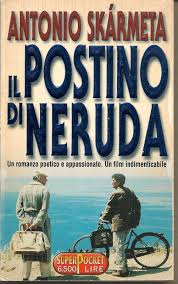
Neruda reader





